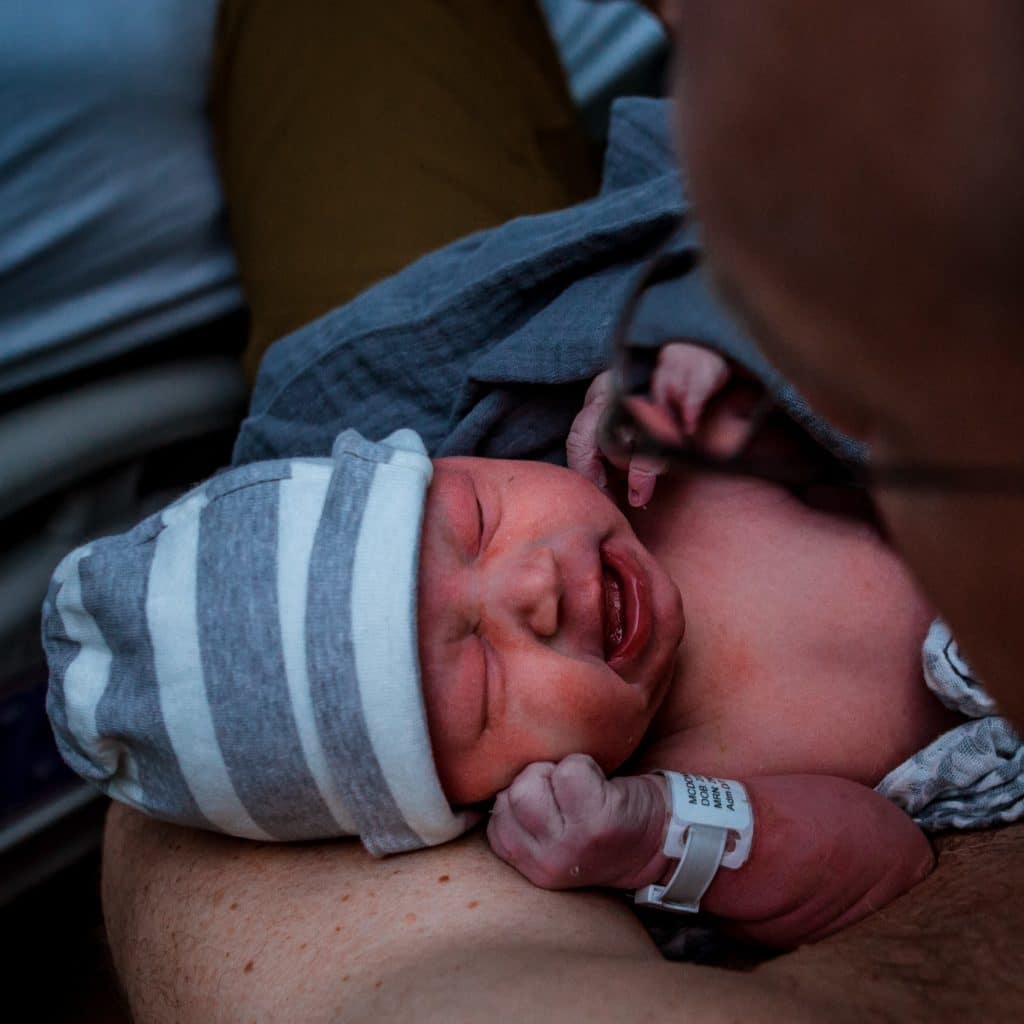Swaddling

In the US it is common to see young babies wrapped tightly with their arms held close to their body. Swaddling advocates say it mimics the tight hold of the womb. Claims are made that swaddling reduces the startle reflex resulting in better sleep and an easier transfer from arms to bassinet. Not to mention those pesky arms get in the way a lot in the early weeks, as baby accidentally bops herself in the head, scratches her own face, and blocks the nipple she most desperately wants when trying to feed.
As an early childhood educator, I knew swaddling was the norm, especially in the hospital, and I was skeptical about the effectiveness. First, I believe in a strong image of a competent infant. Many adult interventions, though well-meaning, slow down and interfere with the natural learning processes. I also believe a child has a right to access her hands. As an educator, I wasn’t present in the newborn stage but saw the impact removing the swaddle when they were rolling over and it was no longer safe. I had worked with enough babies to know that for some it really regulates them and makes sleep possible. My plan was to not swaddle her unless she needed it (couldn’t sleep more than a few minutes without startling or couldn’t get out of a crying loop any other way). I knew that scratches were at the bottom of the injury pyramid and I would prioritize her having a chance to learn to use her hands over preventing scratches.
Banner was quite regulated and easy going from birth and so she was never swaddled. We had to reiterate that we wrap her with her arms out many times in that first 24 hours in the hospital. We had one nurse ask with kindness, not judgment, about why we wanted her arms out and I explained. It was a challenge the first two or three nights to put her down in the bassinet, but that subsided. In her defense, she was just barely understanding the new world and a bassinet is not as secure or warm as someone’s arms.
On her second day she found her thumb, which she surely would not have been able to do had she been wrapped with her arms in a swaddle. She became consistently more able to get her thumb into her mouth in the weeks following. I did find the arms rather irritating as they interfered with breastfeeding, but later read that babies use their hands to orient themselves and feed. When I paused to observe, I noticed that she did in fact use her hands to help her. If I was more patient and attuned, I would see it. Inevitably, she scratched herself, but the scratches quickly faded. Perhaps things will change, I thought as I planned to continue to follow her cues, but we never needed the swaddle.
Alternatives to Swaddling
Easing the transfer to the crib or bassinet
- Place a hand on baby’s chest or let her hold
- Make sure baby is warm/cool enough, imagine what you would be comfortable in if you were sleeping alone rather than with a partner
- Consider placing a hot water bottle or heating pad in the bassinet to warm it before transferring in baby (remove it, baby cannot sleep with warming elements)
Managing the startle reflex
- Accept that this will lessen with time and swaddle only delays the process
- Offer infant massage during the day or before rest
- Don’t over respond with anxiety to stirring. We like to differentiate between complaining and asking for help. If your newborn is asking for help respond promptly with help, but if she is complaining just listen and empathize (even silently).
- Wrap with arms out
Scratches
- Trim her nails
- Let it go
- Put some aquaphor or vaseline on cheeks for protection
Flailing arms during feeding
- Offer feeds in a position in which she can self latch such as lying down.
- Observe if the hands are helping her orient.
- Position so one hand is on either side of the chest in cradle or cross cradle.
- Encourage slow and calm with your own energy.
- When necessary hold her hands and draw boundaries around the grabbing of sensitive nipples.
- Nurse with a lovey or small blanket to calm flailing arms.
Crying – (Research has not shown swaddling to reduce crying.)
- Make sure baby is full.
- Bring baby skin to skin with a caregiver.
- Take a walk outside.
Categories: Uncategorized
Tags: breast, competent baby, crying, newborns, startle reflex, swaddling
